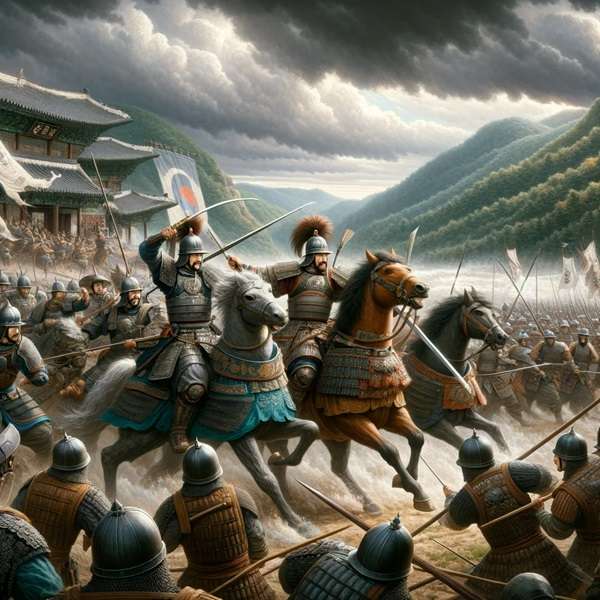
Background: The Rise of Goryeo and Liao Dynasties
Before delving into the wars themselves, it’s essential to understand the rise of the two powers involved. The Goryeo Dynasty, established in 918 by King Taejo, unified the Later Three Kingdoms of Korea, marking the beginning of a period characterized by cultural flourishing and political stability. Concurrently, the Khitan, a nomadic tribe from what is now Northeast China, founded the Liao Dynasty in 907 under the leadership of Emperor Abaoji. These two emerging powers shared a border and a growing interest in regional dominance.
The Prelude to Conflict
The roots of the Goryeo-Khitan Wars lie in the ambitions of the Khitan Liao Dynasty to expand its influence into the Korean Peninsula. The Khitans, renowned for their cavalry and military prowess, viewed Goryeo as a strategic buffer and a potential tributary state. Goryeo, valuing its sovereignty and under the leadership of resolute monarchs like King Seongjong, resisted these ambitions, setting the stage for inevitable conflict.
The Wars and Key Battles
The Goryeo-Khitan Wars can be divided into three major campaigns:
- The First Campaign (993-994): Triggered by Khitan incursions, this campaign saw the Khitan forces, led by Emperor Shengzong, penetrate deep into Goryeo territory. The Goryeo court, led by King Seongjong, was forced to sign a humiliating agreement, ceding territories and agreeing to a tributary relationship.
- The Second Campaign (1010-1011): This campaign was initiated by the Khitans in retaliation for Goryeo’s alliance with the Song Dynasty of China. Led by Emperor Shengzong, the Khitans again invaded Goryeo. However, they faced stiff resistance, particularly at the Battle of Gwiju, where General Gang Gam-chan employed the famous “water attack,” leading to a significant Khitan defeat.
- The Third Campaign (1018-1019): The final major conflict, led by Khitan’s Xiao Paiya, saw the largest invasion force. However, Goryeo’s strategic fortifications and guerrilla tactics, under the command of Generals Gang Gam-chan and Yang Gyu, resulted in the decisive Battle of Kwiju, where the Khitans suffered catastrophic losses, effectively ending the war.
Impact and Legacy
The Goryeo-Khitan Wars had profound implications:
- Political: The wars solidified Goryeo’s sovereignty and territorial integrity, allowing it to emerge as a significant regional power.
- Cultural: The conflict influenced Korean military tactics, fortification construction, and even impacted Korean art and literature.
- Identity: The resilience and eventual success of Goryeo against a powerful adversary became a source of national pride and contributed to a distinct Korean identity.
Conclusion
The Goryeo-Khitan Wars were more than mere historical footnotes; they were pivotal in defining medieval East Asian geopolitics. These conflicts tested the mettle of the Korean people and their leaders, forging a legacy of resilience and strategic ingenuity. Understanding these wars provides a window into Korea’s medieval struggle for sovereignty and the shaping of its national identity.
The Sino-Japanese War (1894-1895): Unraveling Korea’s Pivotal Role in East Asian Conflict
Hi, I’m [jeybee]. As a long-time resident of Seoul, I’m passionate about uncovering the authentic, everyday magic of Korea. This blog is my way of sharing my favorite spots, tips, and cultural insights with you, beyond the usual tourist traps.

